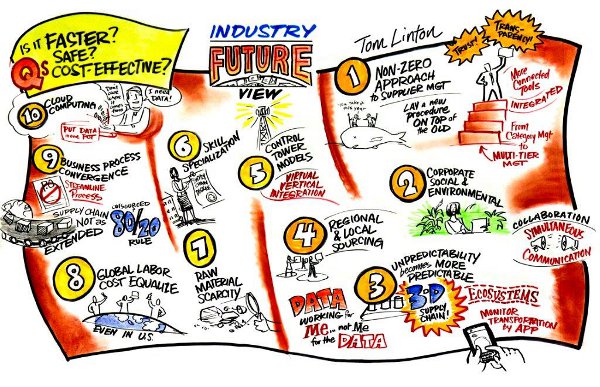A bold approach to transforming IT acquisition

Without a future vision and an appetite for risk, reforms lead down a rabbit hole. There is a better way.

Alice: Would you tell me, please, which way I ought to go from here?
The Cheshire Cat: That depends a good deal on where you want to get to.
Alice: I don't much care where.
The Cheshire Cat: Then it doesn't much matter which way you go.
Like Alice, IT procurement reformers are searching for directions without a clear sense of where they want to go.
Rather than continuing to spend billions trying to fix the current IT acquisition system, we must create a view of what acquisition can become, what value it should deliver and what strategic choices we can make now based on that vision.
Since 2013, government executives, industry thought leaders and rising acquisition professionals have been meeting to create the Acquisition of the Future (AOF) movement to give life to that vision and suggest those choices. And we're almost finished constructing a guide that government can use to take advantage of this new environment and its possibilities.
Our personal experiences with digital services and products have raised our expectations for all institutions, including government. Today's citizen expectations already exceed what we can deliver, and they will be dwarfed by those of the new generations entering the workforce. Those true digital natives are accustomed to speed, transparency, joint creation, trust-based transactions and ubiquitous technology in all their relationships. Their impatience with anything less will only hasten the disruption that is upon us.
Our online, interactive, data-rich, agile and value-focused era -- which we refer to as the Collaboration Age -- stands in stark contrast to our linear, information-hoarding, regulation-laden and process-driven government and acquisition systems, which were designed for the long-gone Industrial Age. If we are to harness the tremendous energy and opportunities created by the Collaboration Age, then government acquisition and IT procurement must be transformed.
Yet we are once again awash in attempts to reform IT buying, not transform it. The House-passed Federal IT Acquisition Reform Act awaits Senate action. Meanwhile, the Reforming Federal Procurement of IT Act has been introduced in the House. Both proposed laws would give CIOs control of agency IT budgets, strengthen review of IT investments, push for greater sharing of IT services and make it marginally easier for innovative companies to enter the federal market.

The Acquisition of the Future movement is built on understanding Collaboration Age dynamics and trends affecting government and industry, such as those identified by Flextronics Chief Procurement Officer Tom Linton in this graphic by Bruce Van Patter. Want to be a part of it? Go to AcquisitionoftheFuture.org to join the movement.
At the Pentagon, the third Better Buying Power initiative focuses on retaining the country's technological edge by encouraging innovation via greater use of incentive-based contracts, reducing market barriers to new players and adding opportunities to compete by using open systems architecture.
And at the Office of Management and Budget, the new U.S. Digital Service was born from the lessons learned from the launch of HealthCare.gov. Its TechFAR Handbook outlines flexibilities in acquisition regulations agencies can use to support more iterative software development.
All those incremental reforms are laudable, but unfortunately, no jointly defined or broadly acknowledged vision unites and animates them. They aren't shaped by a unified understanding of the current state of government or the effects of the new age we've entered. And few address what might be the key element of successful federal IT acquisition: the critical need to develop an appetite for appropriate risk taking.
Building on a shared vision of a future based on Collaboration Age possibilities, AOF is creating a guide to provide a common language about the new dynamics and opportunities, a way to understand the desired direction for federal acquisition, a menu of strategic choices that we need to begin making now in order to get to that desired state, and a way to measure how far we've traveled toward the goal.
The AOF Transformation Guide is intended to be a community-owned and shared, continuously improving document. It is designed to describe, not prescribe, a variety of options and levels of evolution.
It is based on five critical dimensions of transformation:
- Buyers -- including individuals, programs and the whole of government.
- Marketplace -- the physical and virtual meeting space for buyers and sellers.
- Acquisition ecosystem -- encompassing structures and methods for all elements of acquisition (programs, agency and administration leadership, IT, financial management, legal support, oversight and Congress).
- Culture -- the values, organizational constructs, energizing spirit, beliefs, mores and North Star that guide us.
- External forces -- the people and organizations that support, oversee, benefit from and advocate for acquisition.
Central to envisioning acquisition's future are imagining and describing those dimensions as shaped by Collaboration Age dynamics and opportunities because they look vastly different from the current Industrial Age state.
For example, consider the lamentations and recriminations about waterfall development of government IT projects. Long, linear, closed processes aimed at building "exquisite solutions" to requirements that significantly morph from inception to the delivery of a system are destined to fall short. Yet we continue to default to this approach, in part because of existing processes and in part because our negligible national appetite for risk in government dooms us to it.
So instead, we should imagine a future in which we agree to grant federal professionals the same opportunity that is provided by essentially every successful American company: to zero in on outcomes rather than processes and to iterate, test and adapt.
Like industry, government must devote laser-like focus to the needs of its customers -- the beneficiaries of federal programs.
Like industry, government must devote laser-like focus to the needs of its customers -- the beneficiaries of federal programs. Programs could deploy data about their own and other agencies' purchases to better understand the costs and contracts necessary to support agile development. Developers and program users could build lightweight solutions to limited requirements, deploy them for testing, learn from the results, improve them and then launch or even change course -- secure in the knowledge that experimentation and even failure are encouraged and expected, and the cost of failing small is built into the deal.
Open architecture could become the status quo in an agile federal IT market, thereby attracting new entrants to compete and bring innovation in small increments. A buzzing, lively, open marketplace could quickly identify new ways of delivering benefits to citizens. It would not only welcome new companies but also elicit innovation from experienced and deeply knowledgeable firms that already sell to government.
Such a market would also invite greater numbers of individual contributors and groups to participate through crowdsourcing and contests designed to find solutions to tough challenges without large contractual investments.
Extending strategic sourcing to commonly bought and commercially available products and services and fully using IT shared services and cloud computing could free acquisition experts to focus on higher-order work. Armed with cognitive-computing decision assistants, acquisition professionals could finally become strategic advisers and redeploy their efforts away from applying manual and siloed procurement processes, determining socioeconomic impacts and enforcing compliance. Instead, they could set business strategy, identify and engage capabilities, and invest in and shape markets to provide and co-create innovation.
Those are just a few of the many examples in the AOF guide. And they are just a few of the approaches that would allow our federal workforce to focus on providing the business and benefits of government.
Equipping government professionals with digital tools for making tough decisions, engaging with citizens and one another, and delivering greater value won't be quick or easy. Such work will require different choices and alternate investments. But our citizens and our workforce are demanding it, and government and industry are capable of accomplishing it.
By early next year, the AOF Transformation Guide will be publicly available online to spur the conversations and actions that will support the development of each agency's vision and plans for its acquisition future. As befits the Collaboration Age, users will be able to annotate the guide with their lessons, observations and experiences in applying it.
Transforming IT procurement and all of acquisition will take a huge diversity of knowledge and contributions from every quarter -- including yours.


